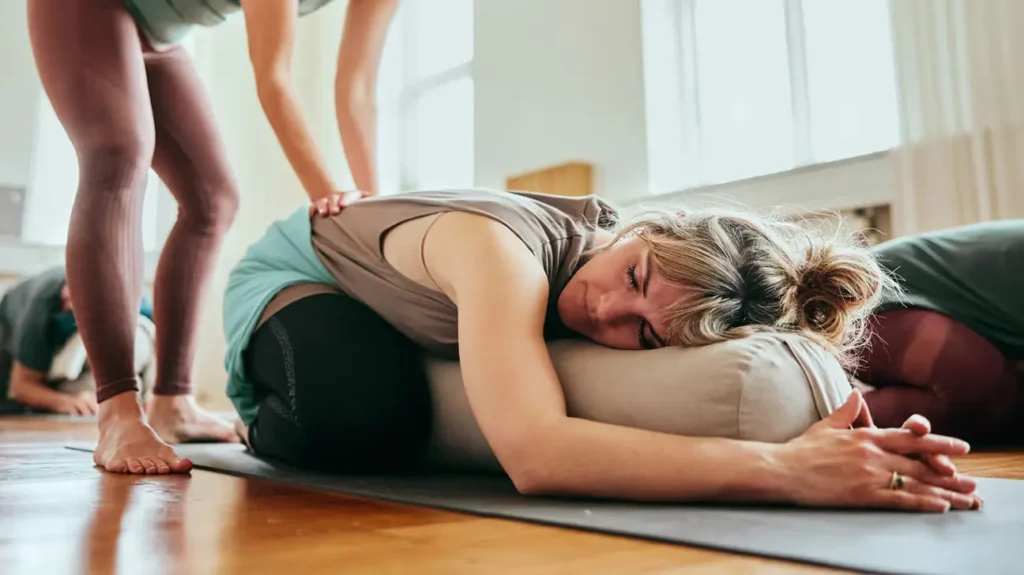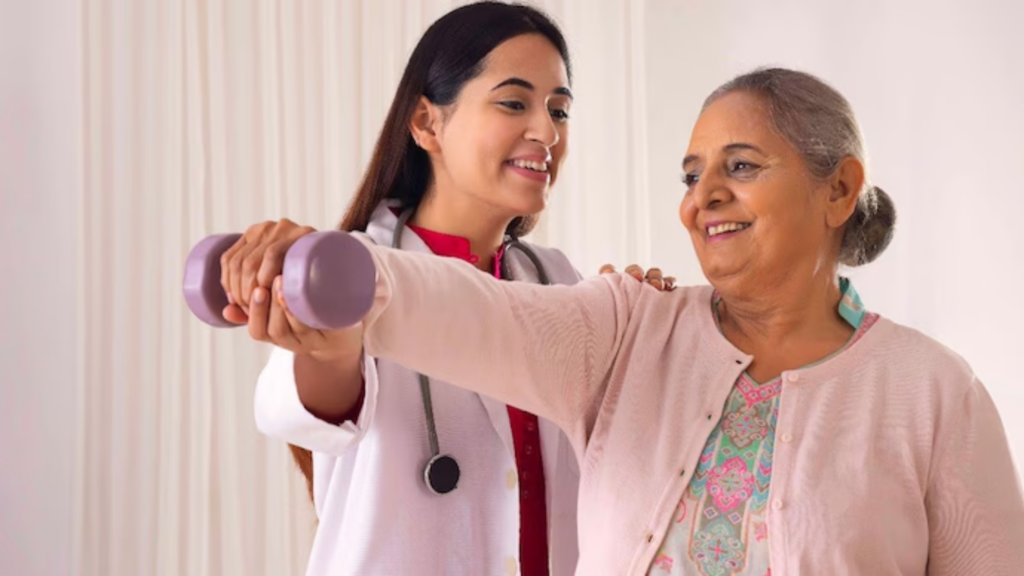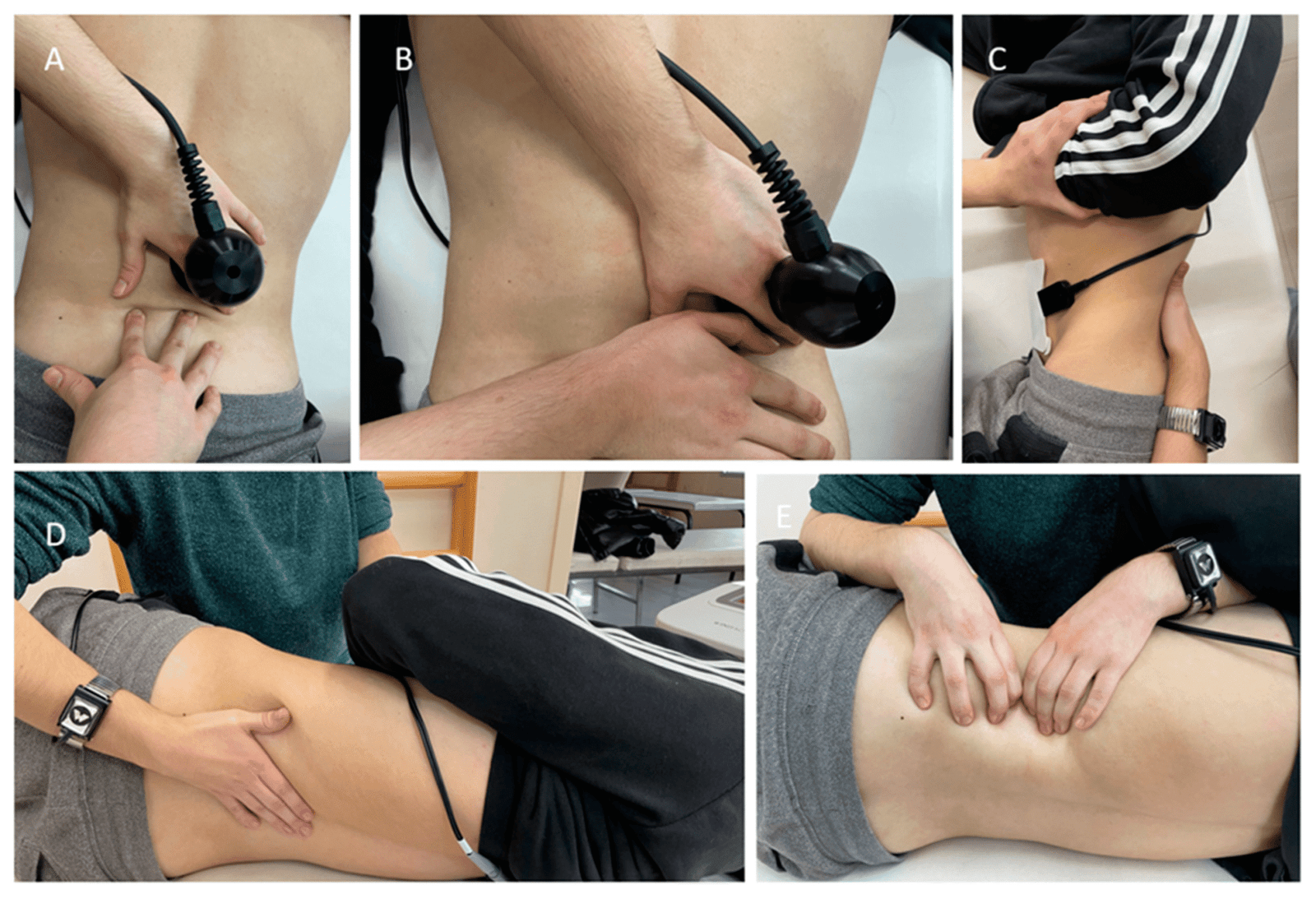Painful Cramps and Body Fatigue During Your Periods? Here’s How Physiotherapy Supports Women’s Menstrual Health On this page Why cramps and crushing fatigue happen The fatigue piece When period pain isn’t “normal”: red flags to watch
Painful Cramps and Body Fatigue During Your Periods?
Here’s How Physiotherapy Supports Women’s Menstrual Health
On this page
- Why cramps and crushing fatigue happen
- The fatigue piece
- When period pain isn’t “normal”: red flags to watch
- What physiotherapy can do (and what the evidence says)
- Managing the fatigue: guard your energy like an athlete
- Special scenarios
- A simple, repeatable weekly template (customize to your cycle)
- Conclusion


PIf your period routinely knocks you out—cramping that hijacks your plans, legs that feel like cement, and a brain fog that makes even small tasks feel huge—you’re not being “dramatic.” Menstrual pain (dysmenorrhea) and cycle-related fatigue are among the most common, most underestimated health burdens for women and people who menstruate. .
They affect school attendance, work performance, sleep quality, and exercise habits. And they’re not just “a day or two” for many: the fallout can stretch across the entire month through anticipatory anxiety, disrupted training, and recovery debt. Physiotherapy can be a game-changer here—reducing pain, reclaiming energy, and giving you tools that work in real life.
This article breaks down what’s going on, when symptoms signal something more, and exactly how physio (plus smart self-care) can support your cycle—grounded in current research
Why cramps and crushing fatigue happen
Primary vs. secondary dysmenorrhea
- Primary dysmenorrhea is period pain without an underlying pelvic condition. It’s largely driven by high prostaglandins that cause the uterus to contract more strongly and reduce blood flow, which triggers pain and inflammation.
- Secondary dysmenorrhea means there is an underlying issue, commonly endometriosis, fibroids, adenomyosis, or pelvic inflammatory disease. In adolescents and young adults who don’t improve with first-line care, endometriosis is the leading cause of secondary dysmenorrhea and should be considered by clinicians.
The fatigue piece
Fatigue isn’t “just hormones.” It’s multifactorial: prostaglandin-driven inflammation, poor sleep around menses, pain-related stress responses, and sometimes iron deficiency—especially if bleeding is heavy. Observational research links dysmenorrhea and PMS with worse sleep quality and daytime sleepiness; poor sleep, in turn, is associated with higher pain ratings.
If your periods are heavy, iron loss can deplete ferritin and eventually lead to iron-deficiency anemia, amplifying fatigue, brain fog, shortness of breath on exertion, and headaches. Guidelines flag heavy menstrual bleeding as a major contributor to iron deficiency; assessing ferritin and hemoglobin is recommended in the right clinical context.
The bigger picture: impact on daily life
Menstrual symptoms drive both absenteeism (missed days) and presenteeism (showing up but underperforming), with studies suggesting presenteeism is the larger productivity drain. That matters for students, caregivers, and workplaces alike.
When period pain isn’t “normal”: red flags to watch
Physiotherapists work as part of your healthcare team and are trained to screen for issues that need medical review. Seek medical evaluation if you have:
- Pain that doesn’t improve after 3–6 months of first-line therapy (e.g., heat, exercise, NSAIDs) or suddenly worsens.
- Pain with sex, cyclic bowel or bladder pain, or pain that starts well before bleeding.
- Heavy bleeding (soaking a pad/tampon hourly, passing large clots), cycle irregularity, or signs of iron deficiency (marked fatigue, shortness of breath, pallor).
These patterns raise suspicion for secondary causes like endometriosis, fibroids, adenomyosis, or bleeding disorders and warrant gynecologic assessment.
What physiotherapy can do (and what the evidence says)
Think of menstrual-informed physiotherapy as a toolkit with four pillars: (1) targeted movement, (2) nervous-system modulation, (3) pain-relief modalities, and (4) lifestyle supports that protect energy and sleep. Here’s how each pillar helps—plus what current research shows.
1) Targeted movement: the most powerful (and sustainable) tool
The strategy: a blend of aerobic activity, mobility/stretching, strength, and mind-body/yoga or relaxation—progressed over 6–8 weeks.
What the research says
- A 2024 network meta-analysis of 29 trials (1,808 participants) found all exercise types reduced primary dysmenorrhea pain at 8 weeks; relaxation-based exercise performed best at both 4 and 8 weeks, with low dropout risk.
- Earlier and more recent reviews similarly support aerobic exercise, yoga, and stretching for reducing pain intensity and duration.
- Newer analyses (2025) continue to conclude that structured exercise lowers pain scores on the VAS scale in primary dysmenorrhea.
How your physio programs this
- Aerobic base (2–4×/week): brisk walking, cycling, swimming, dancing 20–30 minutes at a conversational pace. This boosts pelvic blood flow, anti-inflammatory signaling, and endorphins.
- Mobility & stretching (most days): gentle hip flexor, hamstring, adductor, and thoracolumbar mobility plus diaphragm-rib mobility to ease guarding and improve breathing mechanics (see breathing below).
- Strength (2×/week): compound lower-body (squats, hinges, step-ups) and core-to-pelvis integration (dead bugs, side planks, bird dogs, Pallof press). Strength work reduces generalized pain sensitivity over time and supports posture during menses when cramps stiffen the trunk.
- Yoga/relaxation (3×/week or mini-sessions daily): cat-cow, child’s pose, sphinx, supported bridge with a cushion under the sacrum, reclined cobbler’s pose, and legs-up-the-wall are user-friendly and evidence-supported for pain relief.
Timing tip: Many find it easiest to de-load intensity in the late luteal phase (days −3 to +2 relative to bleed onset) and emphasize mobility, walking, and relaxation on the heaviest days. Then ramp into strength and cardio through the follicular and ovulatory windows when energy typically rebounds.
2) Nervous-system modulation: breathing and biofeedback for pain & energy
Cramping pain ramps up the sympathetic (“fight or flight”) system. Intentional slow, diaphragmatic breathing can tilt the balance toward parasympathetic (“rest and digest”), modulating pain processing and promoting recovery.
- Systematic reviews link heart-rate variability (HRV)—a marker of autonomic flexibility—to pain modulation; practices that raise HRV (slow breathing, relaxation) are associated with lower pain reactivity.
- A 2022 systematic review and meta-analysis found slow deep breathing reduces acute clinical pain—not period-specific, but relevant for on-cycle pain management and coping.
Your physio might teach:
- Resonant breathing (about 5–6 breaths/min): inhale 4–5 seconds, exhale 5–6 seconds, 5–10 minutes.
- Box breathing (4-4-4-4) or extended exhale (inhale 4, exhale 6–8) to downshift pain-related arousal.
- Pelvic-diaphragm synergy: hands at lower ribs; feel expansion 360° on inhale, gentle abdomino-pelvic recoil on exhale. This reduces abdominal wall guarding that can intensify cramps.
Tech-forward (optional): Some patients like to track HRV and resting heart rate with wearables to spot their perimenstrual dip and proactively schedule recovery sessions those days. (Use this as a personal pattern, not a diagnosis.)
3) Pain-relief modalities you can actually feel
Heat therapy
Low-risk and accessible, heat can relax uterine muscle, improve local blood flow, and dampen pain signals.
- A systematic review found consistent reduction in menstrual pain with heat therapy vs unheated placebo; more high-quality trials are still needed, but clinical effect is meaningful and immediate.
TENS (Transcutaneous Electrical Nerve Stimulation)
Portable TENS units (including period-specific wearables) deliver non-invasive stimulation that can gate pain signals and prompt endorphin release.
- A 2024 review concluded both high- and low-frequency TENS may reduce period pain compared with placebo or no treatment (certainty of evidence varied; risk of bias noted). Earlier meta-analyses point in the same direction.
- Your physio can help with pad placement (typically lower abdomen or lumbosacral area), frequency (e.g., 80–120 Hz for high-frequency), and session length (20–40 minutes, repeatable).
Manual therapy & myofascial approaches
For some, cramping triggers protective stiffness in the abdominal wall, hip flexors, and thoracolumbar fascia. Skilled manual therapy can restore mobility and reduce myofascial tenderness.
- In endometriosis-related pelvic pain, an 8-week manual therapy protocol improved pain and quality of life vs placebo in an RCT. While endometriosis isn’t the same as primary dysmenorrhea, this supports the role of hands-on care in complex pelvic pain.
- Emerging trials are testing structured myofascial release for primary dysmenorrhea; early results are promising but still limited.
Pelvic floor physiotherapy
The pelvic floor often co-contracts with abdominal muscles during cramps. Learning to relax (not only strengthen) these muscles can reduce central sensitization and pain anticipation. Evidence in deep infiltrating endometriosis is mixed for urinary/sexual outcomes, yet there can be symptom relief in subgroups; your physio will tailor care and coordinate with gynecology.
4) Lifestyle supports that protect energy, sleep, and focus
Sleep hygiene with cycle awareness
Dysmenorrhea and PMS are associated with worse sleep quality and daytime sleepiness; pain severity correlates with insomnia symptoms. Plan for sleep buffering (aim for +30–60 min) on your “high-symptom” days and use wind-down breathing, light exposure control, and caffeine timing.
Iron status
If you have heavy bleeding or unexplained fatigue, ask your clinician about checking ferritin and hemoglobin; treating iron deficiency (with or without anemia) can make a dramatic difference in energy.
Anti-inflammatory daily rhythm
Consistent movement, hydration, balanced protein/iron-rich meals, and daylight exposure all support circadian regulation and inflammation control—less glamorous than “biohacks,” but they work.
A physiotherapy roadmap: from assessment to action
Step 1: Menstrual-informed assessment
Your physio will map symptoms across the cycle:
- Pain timing: pre-bleed vs during vs throughout cycle; unilateral vs central; radiation to low back or thighs.
- Bleeding profile: duration, heaviness, clots, flooding episodes, pad/tampon changes per hour.
- Fatigue & sleep: worst days, naps, insomnia features.
- Red flags: dyspareunia, bowel/bladder symptoms, sudden symptom escalation.
- Movement screen: thoracolumbar mobility, hip rotation, hip flexor length, abdominal wall tenderness, breathing mechanics, pelvic floor tone/coordination.
If red flags or refractory symptoms are present, physios liaise with gynecology for imaging, medical management, or hematology workup (e.g., ferritin for suspected iron deficiency). ACOG advises reassessment if symptoms don’t improve within 3–6 months of initial management.
Step 2: 8-week core program (evidence-aligned)
Weeks 0–2: Calm the storm
- Daily 10–15 min mobility: cat-cow, thoracic openers, 90/90 hip flows, gentle adductor/hamstring stretches (30–45s, 2–3 rounds).
- Walking 15–25 min most days; optional short cycling or swimming.
- Breathing 5–10 min: resonant or extended-exhale protocols.
- Heat 20–30 min at onset of cramps; TENS as needed (learn placement and settings).
- Strength (1×/week): light loads, full-body patterning (goblet squat, hinge to box, bird dog, side plank), RPE 5–6/10.
Weeks 3–6: Build capacity
- Aerobic 3×/week, 25–35 min, adding gentle intervals (1–2 min faster / 2–3 min easy).
- Strength 2×/week:
Day A – lower body focus (squat or split squat, hip hinge, calf raises);
Day B – hip stability & core (step-ups, lateral lunges, dead bugs, Pallof press).
Progress sets to 2–3, RPE 6–7/10. - Yoga/relaxation 3×/week for 15–20 min (include supported bridge, reclined cobbler’s, legs-up-wall).
- Keep heat/TENS for symptom spikes.
Weeks 7–8: Personalize & pre-empt
- Nudge intensity up outside your heaviest days; schedule de-load across days −2 to +2 relative to bleeding.
- Introduce tempo sets in strength or longer aerobic sessions once weekly if recovery is good.
- Continue breathing (5–10 min) most days; consider a short session before bed during PMS week to improve sleep onset.
Why 8 weeks? That’s the timeframe where multiple studies found the clearest reductions in menstrual pain across different exercise types.
Step 3: Pelvic floor & myofascial options (as needed)
- If assessment finds high resting tone or guarding, sessions may include down-training, biofeedback, and gentle internal or external techniques (with consent).
- For abdominal wall trigger points and thoracolumbar tightness, manual therapy and guided home release (ball or foam roller) can help.
- For suspected or confirmed endometriosis, physios coordinate with gynecology; manual therapy and graded activity have RCT-level signals for improving pain and quality of life.
Fast-acting “day-of” cramp plan
When pain hits, stack low-risk tools for a compounding effect:
- Heat on lower abdomen or low back for 20–30 minutes.
- TENS 20–40 minutes; adjust intensity to a strong but comfortable buzz.
- Breathing reset 5 minutes (inhale 4–5s, exhale 6–8s).
- Micro-mobility loop (5–7 minutes): cat-cow ×10, child’s pose 60s, supported hip flexor stretch 45s/side, supine knee-to-chest 30s/side, gentle pelvic tilts ×10.
- Short walk (5–10 minutes) or very light cycling to increase pelvic blood flow.
If you use NSAIDs (per clinician advice), taking them before peak pain (often at onset of bleeding or day −1) is more effective than waiting until pain escalates. Pair with hydration and a light, iron-containing snack if you’re prone to nausea.
Managing the fatigue: guard your energy like an athlete
Predictable de-loads
- Block your calendar for lower-demand tasks on days −1 to +2 if that’s your pattern.
- Swap intense sessions for mobility + low-impact cardio. Keep moving, just reduce the load.
Sleep buffering
- Add 30–60 minutes of sleep opportunity during your high-symptom window.
- Use blue-light limits after dusk; try a 10-minute breathing session at bedtime. Evidence links poor sleep with worse dysmenorrhea, so protecting sleep is not indulgent—it’s treatment.
Iron awareness
- Heavy bleeder? Ask your clinician about ferritin testing and iron strategies; treating deficiency restores stamina and cognitive clarity.
Work & study hacks
- Plan focused sprints (25–45 min) with breaks rather than long grinds.
- Use heat patches under clothing at your desk.
- Keep a “period toolkit”: TENS, heat patch, electrolyte sachet, iron-rich snack, spare pain relief (as prescribed), and a soft waistband.
What about acupuncture, acupressure, and other complementary options?
Acupressure/acupuncture-related techniques show growing, but mixed, evidence for reducing primary dysmenorrhea pain; more high-quality trials are needed, especially with rigorous sham controls. If you’re interested and it’s accessible, you can consider it as an adjunct, not a replacement, to core strategies like exercise and heat/TENS.
Special scenarios
Suspected endometriosis
If you have pain that begins well before bleeding, pain with sex, bowel movements, or urination, or pain that persists outside menses, talk to a gynecologist. Physiotherapy addresses pain, mobility, and function, and coordinates with medical/surgical care. Manual therapy and graded exercise can improve quality of life even when lesions require separate treatment.
Athletes and active women
Continuing to train through your cycle is not only possible—it can be therapeutic. Use RPE (rate of perceived exertion) to auto-regulate. On heavy days, do technique work, mobility, and easy cardio; in mid-cycle, push progressive overload.
Frequently asked questions
“If I’m exhausted, should I skip workouts altogether?”
Total rest can feel tempting, but gentle movement (walks, yoga, mobility flows) typically reduces pain and stiffness and can improve mood. Save maximal efforts for higher-energy days.
“Can breathing really change pain?”
Yes—by shifting autonomic tone. Slow, paced breathing can reduce pain intensity for acute clinical pain and improves perceived control when cramps surge.
“How soon will this help?”
Many feel immediate relief from heat/TENS/breathing on day one. The exercise dividend is clearer by week 8 in trials—stick with it.
“Do I need a pelvic floor exam?”
Not always. If assessment suggests overactivity or coordination issues—or pain with penetration—your physio may recommend pelvic floor evaluation and targeted down-training.
A simple, repeatable weekly template (customize to your cycle)
- Day 1 (heaviest symptoms): 10–15 min mobility + 10 min breathing + (optional) 15 min easy walk; heat as needed.
- Day 2: 20–30 min low-impact cardio + gentle yoga flow (15 min).
- Day 3: Full-body strength (light-moderate), 30–40 min; finish with 5 min breathing.
- Day 4: Restorative yoga (20 min) + 20 min walk.
- Day 5: Aerobic intervals 25–30 min + core stability (10 min).
- Day 6: Strength (moderate), 35–45 min; hips and thoracic mobility (10 min).
- Day 7: Long easy walk or ride (30–45 min) + 10 min mobility.
Rotate the “heaviest days” to match your cycle.
How a physio visit typically looks
- History & screening: symptom map, cycle timing, fatigue, sleep, red flags.
- Movement & breath screen: trunk/hip mobility, pelvic coordination, breathing pattern, pain provocation.
- Education: what to expect from heat, TENS, exercise timelines, and how to periodize effort.
- First-session relief: heat/TENS setup and a brief mobility + breathing routine you can repeat tonight.
- Program build: a progressive 8-week plan with cycle-aware de-loads.
- Follow-up: progressions, symptom tracking, and (if needed) referral for gyne or iron testing.
Conclusion
Period pain and period-linked fatigue are real, common, and treatable. You don’t have to choose between “pushing through” and “lying on the floor for three days.” Physiotherapy gives you a stack of tools: smart exercise (with 8-week payoffs), breathwork for nervous-system calm, low-risk pain-relief modalities like heat and TENS, and evidence-informed lifestyle strategies that protect sleep and energy. And if your symptoms suggest something more—like endometriosis or iron deficiency—your physio can help you get the right medical work-up.
Quick evidence highlights you can trust
- Exercise works across types; the effect is clearest by 8 weeks, with relaxation-based movement leading in some analyses.
- Heat therapy provides meaningful short-term relief and is easy to use.
- TENS can reduce pain safely for many users; your physio can tailor parameters.
- Sleep problems & dysmenorrhea are linked—guarding sleep helps symptoms.
- Heavy bleeding often means iron loss—check ferritin/hemoglobin if fatigue is persistent.
- Endometriosis is the leading cause of secondary dysmenorrhea in adolescents; persistent or atypical pain warrants evaluation.
Ready to try it? A 10-minute “starter” you can do today
Set a timer for 10 minutes.
- Heat (or warm shower) for 5–10 minutes on the lower abdomen/back.
- Breathing (5 minutes): inhale 4–5s, exhale 6–8s, shoulders relaxed.
- Move (5 minutes): cat-cow ×10 → child’s pose 60s → supported hip flexor stretch 45s/side → knee-to-chest 30s/side → 3-minute easy walk around your space.
Repeat as needed; layer TENS if available.








